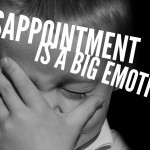 Being a parent, you have probably read about the dangers of childhood obesity many times. Well, here is another article but from a slightly different angle. It examines the changes in our culture from the 1970s to now and how it has changed the weight of our children.
Being a parent, you have probably read about the dangers of childhood obesity many times. Well, here is another article but from a slightly different angle. It examines the changes in our culture from the 1970s to now and how it has changed the weight of our children.
Childhood obesity is the most common childhood disorder in the developed world. How did this happen? How did we let our children become obese and unhealthy? When I lived in America, I wrote a paper on the factors that have contributed to childhood obesity over the last 40 years and here I have summarised my findings. It must be noted, that although this is based on changes in society in America, it can be equated to many other developed countries including Australia and UK.
Here are some worrying statistics on childhood obesity;
– 17 per cent of children in the US are obese (2011-2012) – in 2010 the figure for Australia was 8 per cent of children obese, a 4 per cent rise in 10 years
– 1 in 3 children in the US are overweight (2011-2012) – in 2010 the figure in Australia was 1 in 4 children overweight
– In less than 30 years, obesity has doubled in 2-5 year old and more than trebled in 6-19 year old in USA
– 70 per cent of obese children will become obese adults
– Obesity causes majority of the childhood diabetes cases, increases cardiovascular disease rates, cancers and depression
– Obesity decreases life expectancy from between 5 to 20 years
– In 1998, 9 % of total medical expenditures in the US were related to obesity issues – imagine what it is in 2014!
The definition of obesity is an excess of fat. For children (0-12 years) and adolescent (12-19 years), obesity is classified as those being in the 95th percentile of the body mass index (BMI), while overweight are those in the 85th percentile of BMI.
So how did we let this happen? Easy. There are two major contributors in our society that have affected the rise and rise of childhood obesity. These are socio-cultural changes and changes in the food industry.
Let’s look at each one.
Socio-cultural changes. Raising children in America, as with many developed nations has changed significantly in just one generation. There has been a huge shift in eating habits. There has been a move to eating out, rather than preparing meals at home. Almost 50 per cent of every US food dollar was being spent on take away meals in 1999, imagine what that is in 2014! And an increase of 40 per cent of people eating out between 1987 and 2000. The are a couple of reasons for people eating out – there was a rise in household income in 1970s, ‘unprecedented growth’ of food outlets around the same time and families leading ‘busier’ lifestyles. Not only were the meals bigger when eating out, but there was an increase in fat and salt and lower calcium and vitamins. The number of packaged snacks available also increased.
At the same time as the shift in eating habits, came a decrease in physical activity. The introduction of technology is an obvious reason with some children having up to 8 hours of screen time every day. There was also a decrease in the choice of leisure activities – families started to choose passive, rather than active leisure time. Schools also decreased physical activity with only 22 per cent of US children meeting the basic activity level recommended each day. Due to convenience and time restraints, the car was getting more use. Kids were being driven to school. The fear of children’s safety peaked around 1980s as well and it was considered dangerous for kids to ride or walk to school.
Changes in the food industry. The industry has changed significantly since 1970s. The advent of High Fructose Corn Syrup in 1970s in the US allowed food manufactures to produce cheaper fast food, prepared meals, snacks and soft drinks more easily and quickly. Added to this, it is widely claimed that our body can not break down this particular type of sugar, rather turns it into a fat. In 1970s there was also a boom of franchised fast food chains – McDonald’s, Pizza Hut and Taco Bell spread. Healthier food options are now more readily available, however in 1970s with the increase in family income and advent of more fast food stores this food was value for money for many families. In 1975, McDonald’s added drive through – appealing due to convenience and so readily available. McDonald’s and other fast food chains still remain as some of the cheapest options to eat out for a family in 2014.
At the same time, manufacturers started to produce more food at a relative cost and ‘supersized meals’ became the norm. Fast food chains in particular increased size proportion and got smart with their marketing. Meals were marketed as ‘value meals’ including a large fries, large coke along with a burger, which equated to increase in food and calorie intake. In 1979, McDonald’s started kids value meals ‘happy meals’ including a toy and containing more than 500 calories in each meal. This idea spread to other fast food chains and take away outlets.
I begin to wonder why there are not more children who are obese! While this paper is written specifically on the US, it is in a major problem in all developed countries and gaining speed in many developing countries with change in food and lifestyles.
Our culture has changed so dramatically in such a short time, it is alarming what it might look like in 30 or 40 years from now.
To curb the rate of childhood obesity, there needs to be a national approach to sugar, salt and calorie intake, food marketing, exercise and healthy choices. Also, documentaries like Overfed and Undernourished show that with the right choices, children can maintain a healthy weight range. Food choices, exercise and good role models are all important factors to ensuring our children are healthy, both in mind and body.
Follow BombardedMum www.facebook.com/bombardedmum or www.instagram.com/bombardedmum







Sorry, comments are closed for this post.